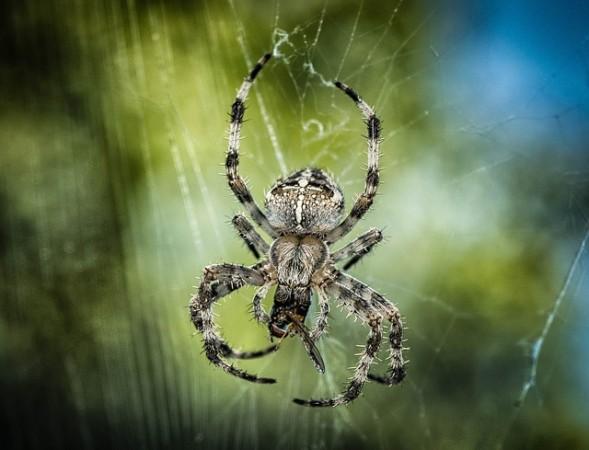
Many of us are terrified by flying cockroaches and to make matters worse, scientists have confirmed that spiders can also fly and also figured out how.
If you didn't know this already, the eight-legged insects, only the tiny ones, take flight by a process called ballooning, which involves releasing a bouquet of streamer-like silks, which acts like parachutes. While baby spiders often use this process to find new homes after hatching, adults use this to find new food source and mates.
But, don't underestimate these silk parachutes as spiders have apparently travelled across entire oceans with them.
For centuries, scientists were trying to understand how these arachnids generate lift. Initially, it was thought that they used electrostatic forces to fly, but a study in the journal PLOS Biology suggests that its silk actually helps the insect to take the flight.
Moonsung Cho, an aerodynamics engineer at the Technical University of Berlin studied crab spiders. He saw, according to gizmodo.com, that before taking the flight, the spiders would lay down an anchor silk strand for safety and then extend one their front limbs into the air to assess the wind – how fast, or slow and in which direction.
If the conditions are favourable, say, less than 7.3 miles per hour (3.3 meters per second) with a nice upward draft, these spiders would stand up straight, jut out their posteriors and shoot 50 to 60 nanoscale silks of average 10 feet long in the air that would also lift them into the skies.
Cho told Gizmodo that these nanoscale silks are so thin that they use the viscosity of air to stay afloat. "From the viewpoint of spider silk, the air is like honey," he said as reported.
Cheryl Hayashi, a spider biologist at the American Museum of Natural History said that the process is incredible and one need to see to believe it. "It gives you a deeper appreciation for how spiders have evolved to do this feat—they're literally sailing through the air," she said, as reported by the website.
On a lighter note, another research from Binghamton University, State University of New York has recently showed that fine fibers like spider silk actually improve the quality of microphones for hearing aids since sensing fluctuating airflow with spider silk should lead to better microphones.
Well, if you are arachnophobic and by now terrified that a spider will fly in from nowhere and land on you, then Hayashi has a valid argument that might be comforting. She says spiders are shy and they do not fly only toward you, but also away from you.
Check out the video here:

















